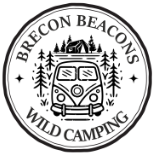



Brecon Beacons Wild Camping © | Website by View Web Design

Brecon, or Aberhonddu as it is known in Welsh is an historic market town in the heart of the Brecon Beacons National Park. Ancient Britons, Romans and Normans have each left their mark on Brecon.
Brecon has a wide range of independent retailers as well as high street stores offering you a comprehensive shopping experience!
There's a thriving creative community in and around the Brecon Beacons National Park, making this a superb region to shop for handmade gifts or art inspired by the countryside.
All our towns have something different to offer. Brecon and Crickhowell have a good mixture of outdoor shops and boutiques, while Abergavenny is fantastic for food.
The quirky, arty town of Hay-
In our villages and rural areas, you'll find general stores and farm shops stuffed with Welsh specialities and seasonal produce, while our National Park visitor centres and tourist information offices are good places to pick up local maps and guides.
A few miles to the south is Cyfarthfa Retail Park offering shopping by many top High Street names and a health club.
We are close to Hereford in the north and too the south you will find the Cardiff, our capital city of Wales.
The town's name comes from that of the old Welsh name of the kingdom -
A short distance upstream, the River Tarrell enters the Usk river. Before the building of the bridge over the Usk, Brecon was one of the few places where the river could be forded, making it an important strategic military position as well as an important crossing point in mid Wales for drovers, farmers and merchants.
It is therefore not surprising that during the Norman invasion of Wales, Brecon became the site for a defensive Norman castle built by Bernard de Neufmarche in the late 11th century. Less than a mile from the remains of the castle stands Brecon Cathedral, founded as a Benedictine monastery by Neufmarche's confessor, a monk from Battle Abbey in Sussex. While fairly modest as cathedrals go, nevertheless it is of great historical interest, and has seen both Norman lords, Welsh princes and leaders worship and be interred in its grounds. It boasts the biggest cresset stone in Britain with 30 cups (a cresset stone is an ancient form of lighting -
Alongside the cathedral stands the Prior's house. One of its most notable occupants was Sir John Price (1502-
There is a huge Iron Age hill fort of Pen-
To the West of the town lies the largest Roman fort of its type in Wales -
The hills around Brecon boast some of the finest walking and mountaineering terrain in Britain, including Pen-
In August, the annual Brecon County Show takes place. Also the Brecon Jazz Festival is held over 3 days within the town centre with performances in several open air venues, and in a number of indoor venues including the town's market hall and at Theatr Brycheiniog.
Brecon has strong military links to this day. There are two military bases located outside the town. Dering Lines is the home to the Infantry Battle School, formerly known as Infantry Training Centre Wales, and the Brecon Barracks are home to 160 solders of the Wales Brigade. Eight miles away near Sennybridge there is a third military establishment. Sennybridge Training Area is an important training facility for the British.
Eating Out
A FEAST for all the senses to enjoy from bistros, restaurants and public houses to country inns, coffee shops and tearooms.
Our Eating Out Guide provides an array of both new and established places to eat, all offering quality food and service.
Below are just a few eating establishments in and around Brecon, however as you take a drive out to the countryside, you will come across many pubs and clubs, not yet discovered by our guests…
Tair Bull Inn (1.2 miles)
Libanus, Brecon
The Clarence (4 miles)
The Watton, Brecon
Gurka Restaurant (4 miles)
Glamorgan Street, Brecon
The Wellington (4 miles)
Bulwark, Brecon
Chang Thai Cuisine Restaurant (4 miles)
High Street, Brecon
Zeera Indian Restaurant (4 miles)
The Struet, Brecon
The George Hotel ~ J D Wetherspoon (4 miles)
The Struet, Brecon
Hills Restaurant
Bishops Meadow, Brecon (6 miles)
Award Winning Llanfaes Dairy (4 miles) -
Bridge Street, Brecon
Food Shopping: Morrisons, Co-



































